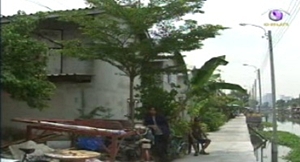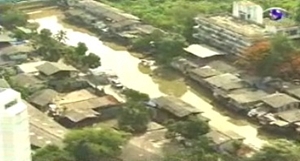To help low-income earners gain their own homes and to tackle rising encroachment on state or private lands and crowded slums, Bann Mankong collective housing programme is the Thai government’s solution.
Community Organisations Development Institute (CODI) director Tipparat Nopladarom said the agency’s projects began in 2003 with an aim to help find new and proper resettlement for residents whose homes were expropriated or damaged in disasters.

About 900 projects have been implemented nationwide, since then.
The campaigns focus on participation of people in local communities by letting them form co-ops to fund 10 per cent of the construction costs, while the remaining 90 per cent will be supported by CODI through soft loans and in the form of assistance in home design and construction.
“House plans vary depending on financial capability, way of life, and land size. Collective houses in line are an alternative for limited land while upcountry where land prices are low, twin houses with more space are optional,” Mr Tipparat said.
Recently, the government has the National Housing Authority survey on land encroachment in Bangkok and the surrounding provinces.

The survey found that about 100,000 homes, built over canal sides, trespass 50 canals. In some areas, about three-fourths of the canals have been encroached upon. The problem must be solved urgently in main canals such as the Premprachakorn, Bang Khen, Bang Bua and Lat Phrao canals, and other waterways to drain floodwater through the capital.
According to CODI, there are more than 6,000 slums which are home to 1.6 million households of low income earners in Thailand. About 700,000 people current face housing problems.
In the nine years since the agency was established, CODI has helped 13 per cent of those in trouble. Although the number is not high, the agency’s projects have fulfilled the hope of low- income earners to have their own homes and solve conflicts of land encroachment among state, private and civil sectors, involving up to 100,000 households.






